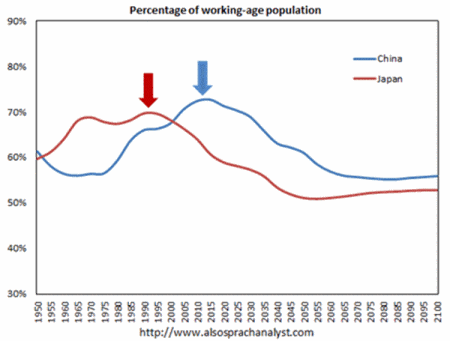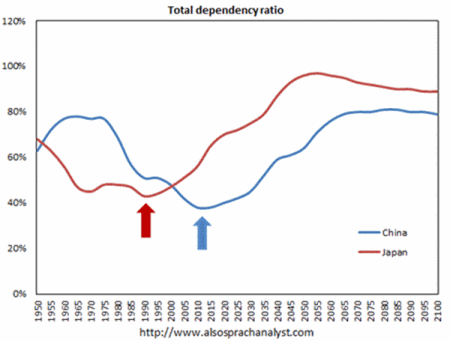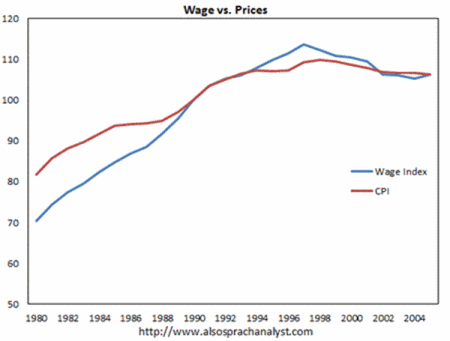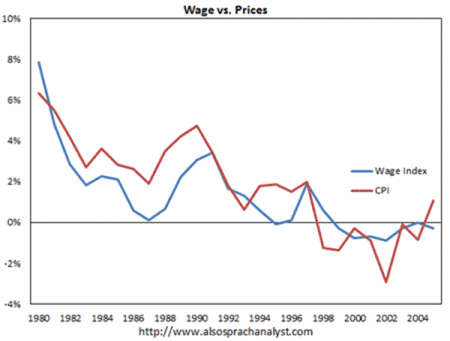China’s rapid growth in the past, particularly in manufacturing, is in part due to the fact that there is a large reservoir of surplus rural labour, which was able to supply the labour demand in the industrialisation in urban China. Because of that, manufacturers were able to hire more labour as they expanded without having to raise wages significantly. When the surplus labour pool dries up, wages have to rise, and corporate profit margins will fall.
Yet, when one goes into more rural part China today, a rapidly ageing population is obvious. As China urbanised, more and more people within the working-age population migrated to cities to seek jobs in various sectors. However, one has to wonder, as one visits some of these rural places, if there are many people left who are willing to migrate to big cities.
Census data as well as other forecasts have made the point that China is rapidly aging. According to UN population division, the proportion of working-age population to total population will peak in around 2015, if not earlier. Accordingly, the dependency ratio will rise rapidly from that point onwards. The bottom-line is that labour is no longer as abundant as it was 10 or 20 years ago. Not surprisingly, then, one should be expecting continuous upward pressure on labour costs and this is already causing troubles for some manufacturers. Of course, part of this is the increasing minimum wage requirements imposed by the government, which have been rising at double-digit rates for recent few years at least.
But, while it is intuitive to argue that the next step will be ongoing wage inflation, and thus prices, the reality may be very different.
The lesson from Japan
It is now very well-known that Japan’s economic boom ended in late 1980s and early 1990s, and the country subsequently drifted into decades-long deflation, that successive rounds of quantitative easing failed to reverse.
Interestingly, the late 1980s Japan was demographically at the same point as China is today. Its working-age population as a proportion of total population hit its peak in late 1980s, and in other words, the dependency ratio increased since then:
So why then did Japan not enter an inflationary period as its dependency ratio rose? This is universally understood to be the result of the the burst of the real estate and stock market bubble. Each was built up on a mountain of debt, particularly in the corporate sector, which gave the banking sector huge non-performing loan problems. As a result of the burst of the bubble and the subsequent slowdown, despite the fact that working-age population peaked in late 1980s, wages started to fall. Likewise, consumer price inflation did not increase, and later turned into a deflation:
The point is to illustrate that the end of the demographic dividend can bring uncertain outcomes. While demographics could be to blame for the ultimately deflationary outcome in Japan (and potentially in China), real estate bubbles and unsustainable debt also play more obvious roles in both cases. One can find many parallels in terms of real estate bubble and debt in China.
This is the first installment in a four part special series on China’s economy. The following specials will include an examination of the Chinese real estate bubble, Chinese debt levels and the prospects for rebalancing the economy to internal growth drivers.



